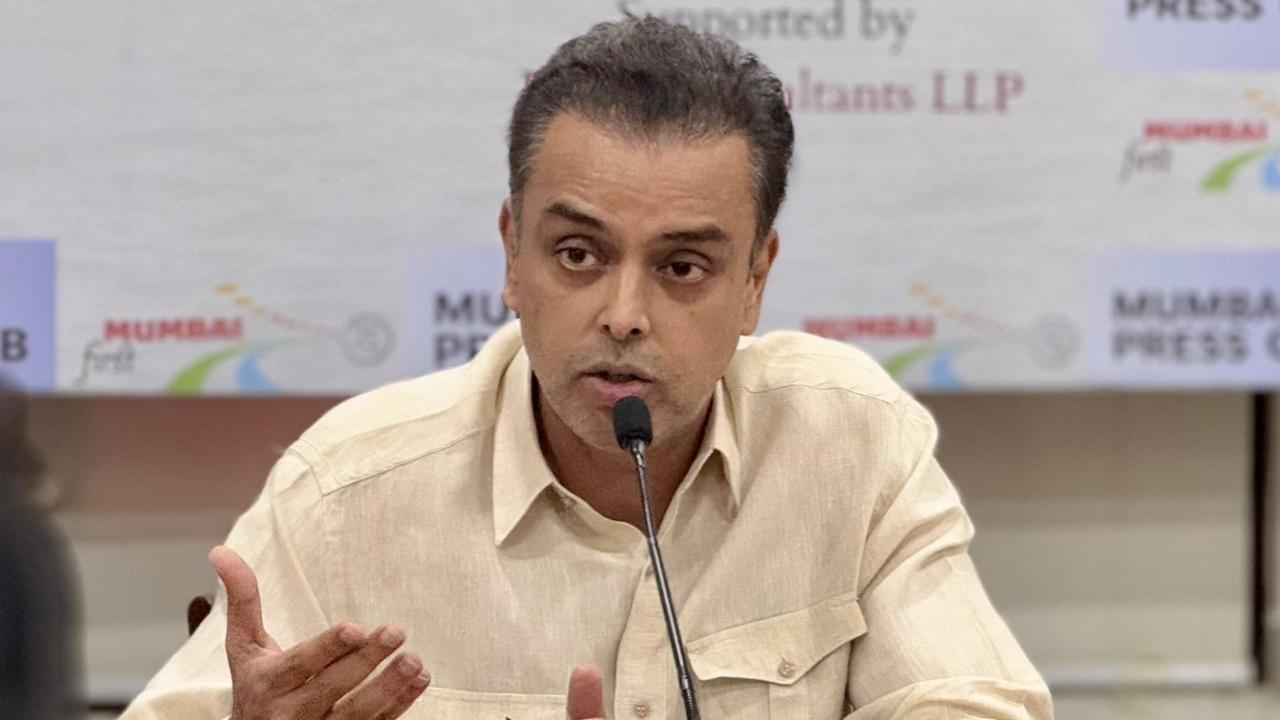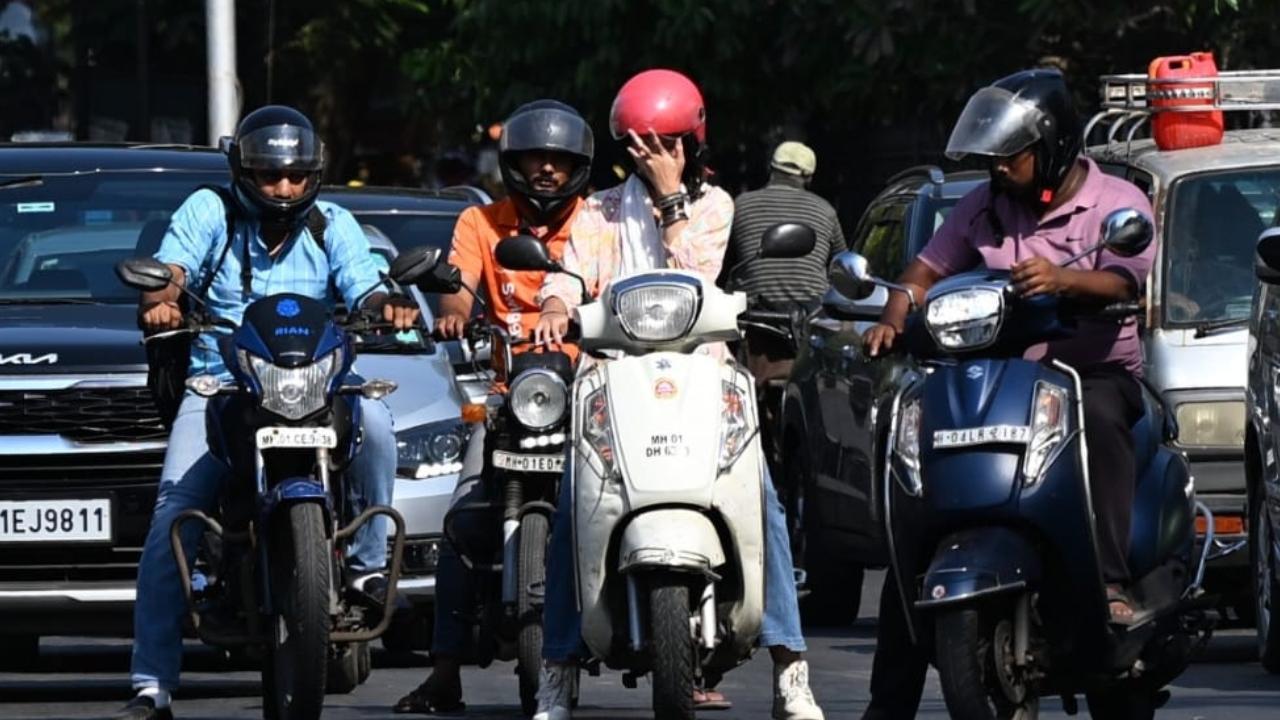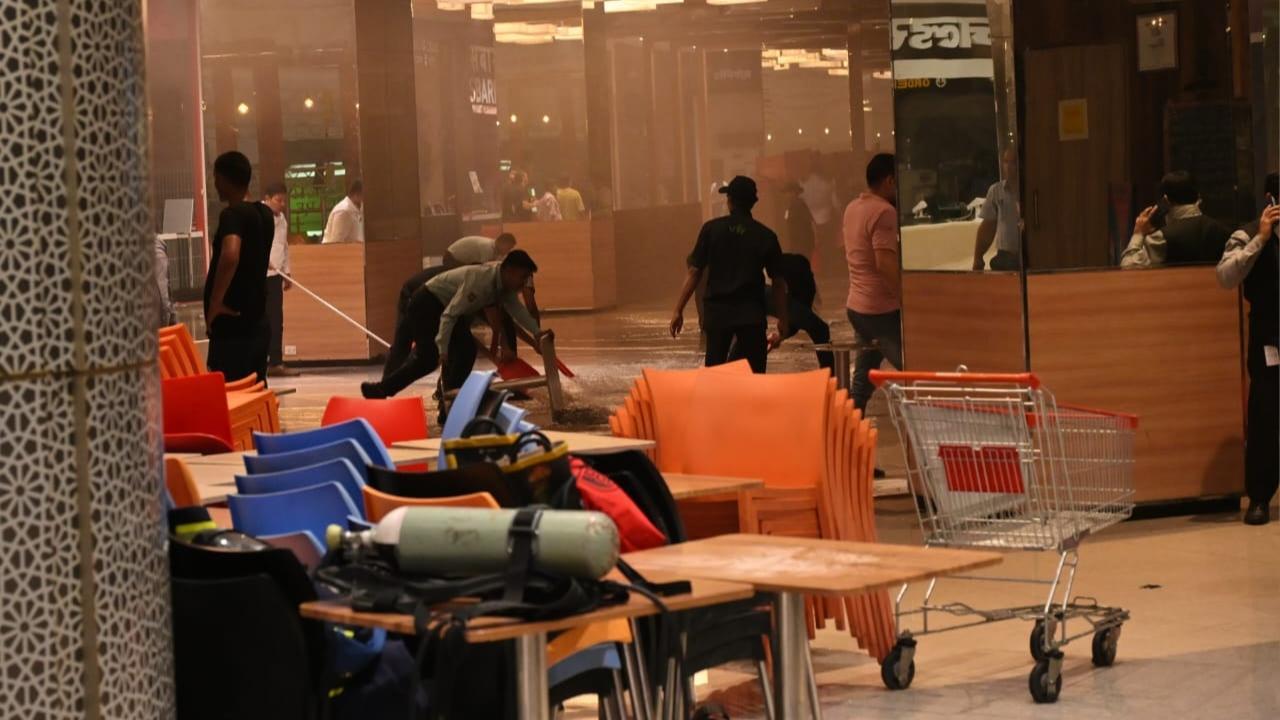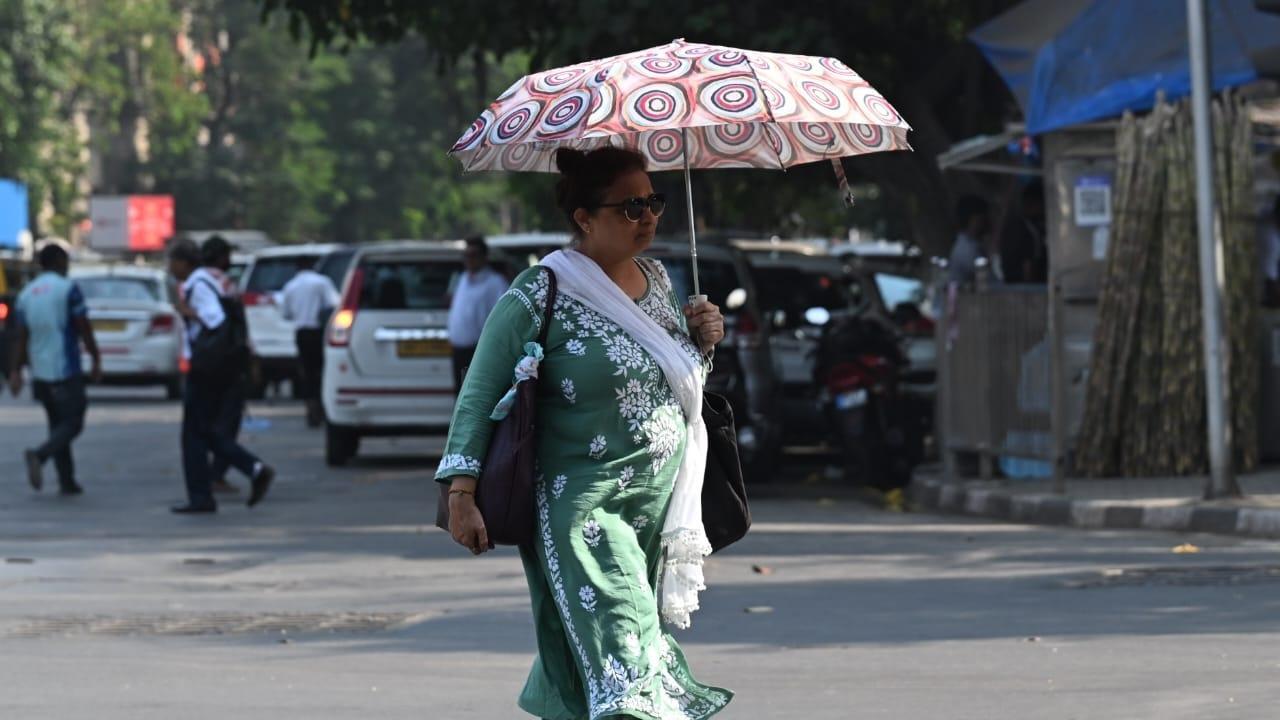Read Mumbai News
Barcelona Legends vs Real Madrid Legends: Diversions issued for motorists
The much-anticipated Barcelona Legends vs Real Madrid Legends match is set to take place at DY Patil Stadium, Navi Mumbai, this Sunday. The event is expected to draw thousands of football fans, which may lead to significant traffic congestion in and around the venue. Accordingly, Deputy Commissioner of Police Tirupati Kakade (Traffic) has announced traffic restrictions and diversions to manage vehicular movement. Majorly, vehicles will be redirected via the Sion-Panvel Highway between Uran Phata and LP Bridge. The traffic restrictions will be enforced on Sunday from 1 pm to 11 pm. However, emergency vehicles, including police vehicles, ambulances, and fire brigades, will be exempted from these traffic restrictions. The most affected traffic areas will be the service road between Bhimashankar Society and LP rickshaw stand, Shivaji Chowk, and Shani Mandir Arch, among others. To prevent congestion caused by illegal parking, the police have designated parking arrangements for fans at Raheja Universal and Mindspace. A notification issued by the Turbhe Traffic Division stated that heavy vehicles will be banned on the affected roads, except for emergency vehicles and those with official event passes. Additionally, the Thane Traffic Police have issued a separate notification regarding restrictions and diversions to ensure smooth traffic flow and minimise inconvenience to the general public and motorists. The notification was issued by Pankaj Shirsat, Deputy Commissioner of Police, Traffic, Thane City. Traffic restrictions and road closures:Kasarvadavli Traffic Division: The Fountain Hotel stretch on Ghodbunder Road, for vehicles coming from Mumbai, Vasai, and Virar towards Thane, will be closed. The Gaumukh Naka will also be closed for traffic. Kalwa Traffic Division: Vehicles coming from Balkum- Saket-New Kalwa Bridge towards Kalwa Naka to Navi Mumbai will face restrictions. Kalwa Naka and Parsik Circle will remain closed. Mumbra Traffic Division: Shilphata on the Panvel to Kalyan Phata-Shilphata via Mahape route will be closed. Kongaon Traffic Division: The Ranjnoli Naka on Kalyan-Bhiwandi Road (Bhiwandi’s JNPT to Navi Mumbai route) will be closed. The stretch near Basuri Hotel will also remain shut. Narpoli Traffic Division: Chinchoti Naka, on the road from Gujarat towards Ghodbunder Road, will be closed. Kalyan Traffic Division: Gandhari Naka on Padgha Road (Bapgaon to JNPT stretch) will be closed. Patripool on Kalyan-Shilphata Road will also remain shut. Kolsewadi Traffic Division: Nisarg Naka on the Taloja Bypass Road (Badlapur-Ambernath Pipeline Road and Bandalpur Checkpoint) leading to Navi Mumbai will see traffic restrictions.
04 April,2025 06:20 PM IST | Mumbai | Aishwarya IyerMumbai local train updates: Strong gusty winds affect Central Railway services
A sheet of flying metal got stuck in the overhead wires due to strong winds between Atgaon and Thansit stations on Central Railway, bringing the Mumbai local rail traffic to a halt on Friday evening. The entire section from Kasara to Kalyan stations on the Central Railway was affected owing to the incident. A Mumbai local train was stopped for 15 minutes while an Express train behind it was halted for eight minutes. Services have now been restored, Central Railway officials said. Central Railway marks huge progress in infrastructure development in 2024-25, check details Central Railway has made major progress in improving its infrastructure during the Financial Year (FY) 2024-25, an official statement said on Thursday. It said that the Central railway completed the commissioning of 325.93 kilometers of track, which includes both safety clearance and engine trial runs for new routes. The Central Railway also shared the details of the key accomplishments- It includes safety clearance of 258.44 kms of track given by Commissioner Railway Safety and completion of engine trial run of 67.49 kms of track. "Several key yards underwent remodelling to enhance capacity. A total of nine major yards, including CSMT, Khandwa, and Sindi, received updates to improve efficiency and safety. Alterations were also made at Kasara, Chalisgaon, and Godhani," the official statement said. It further said that Central Railway has completed 3 Road Over Bridges (ROBs) and 3 Road Under Bridges (RUBs), contributing to safer and smoother travel for passengers and vehicles and the Railway Board received 19 Detailed Project Reports (DPRs), with 6 already approved and 13 awaiting final approval. Two major traffic facility works have been successfully completed during this FY:- - Extension of Platform no 10/11 and platform no 12/13 at CSMT for accommodating 24 coach trains and provision of Electronic Interlocking along with yard remodelling work. - Extension of 3 receipt and despatch lines each in Up and Down lines at Kasara Yard and extension and widening of platform no 1 and 2 at Kasara. In addition, the various non-interlocking works done include: - Yard remodelling in 9 major yards having more than 100 routes viz. CSMT, Khandwa, Sindi, Puntamba, Pachora, Bhandak, Seloo Road, Hinganghat & Chikni Road. - Alteration in 3 major yards viz. Kasara, Chalisgaon and Godhani.
04 April,2025 05:40 PM IST | Mumbai | Rajendra B. AklekarBhivpuri car shed on track, big boost for Mumbai local trains
Mumbai’s local train network is set to get a much-needed boost with work finally beginning on a new rail car shed at Bhivpuri near Karjat. This marks the city’s first new local train maintenance shed in 13 years, the last one being built at Virar in 2012. The Bhivpuri facility will accommodate 20 12-car local trains. New EMU car shed “Apart from Bhivpuri, another EMU car shed has been proposed at Vangaon on Western Railway,” a senior official said. “The Bhivpuri location was finalised by Central Railway in coordination with Mumbai Railway Vikas Corporation (MRVC). Following site surveys and land acquisition, construction has now begun.” The current scope of work includes earth filling, compaction, drainage, boundary walls, road construction, and other preparatory tasks before the workshop is built. Shed layout and capacity As per the layout, the facility will have eight mid-section stabling lines capable of holding 20 12-car trains. Additional infrastructure includes: >> Eight extra lines, including two washing lines >> Three inspection shed lines, with future provision for eight >> Three parallel lines for a lifting shed Location details The car shed is located between Bhivpuri Road and Karjat stations in the Kalyan-Karjat section of Central Railway, spanning seven villages—Vanjale, Savargaon, Koshane, Ashane, Umroli, Garpoli, and Diksal. Local train fleet According to Central Railway (CR) and Western Railway (WR) data: >> CR Mumbai operates 74 12-car rakes, 2 15-car rakes, and 5 AC locals (total: 81) >> WR Mumbai operates 75 12-car rakes, 14 15-car rakes, and 8 AC locals (total: 95) Key role in new corridors The Bhivpuri car shed is expected to be a major support system for the Panvel-Karjat railway project, a crucial part of Mumbai Urban Transport Project 3 (MUTP-3). With work on this corridor 74 per cent complete, the new shed will help facilitate train operations in the region. Voices Nitin Parmar, Zonal Railway Users’ Consultative Committee Member“A car shed at Bhivpuri is a boon for Karjat. More rakes mean more services originating and terminating here. This will also support the upcoming Karjat-Panvel corridor. Commuters are eager for this development.” Ketan Shah, Zonal Railway Users’ Consultative Committee Member“This new shed will boost railway activity across the entire stretch from Karjat to Kalyan. It could pave the way for dedicated shuttle services between Karjat and Kalyan.”
04 April,2025 05:07 PM IST | Mumbai | Rajendra B. AklekarMilind Deora highlights parliament’s late-night efforts in passing Waqf Bill
Hours after the Waqf Amendment Bill was passed in Parliament, Shiv Sena MP Milind Deora highlighted the rigorous schedule of parliamentary proceedings, emphasising the dedication of lawmakers in passing crucial legislation. “For those who say MPs don’t work—just yesterday (or today), Rajya Sabha sat till 4 AM to pass two historic laws & the night before, Lok Sabha debated & legislated until 3 AM. I slept at 5 AM & was up at 7:45 AM to fly back to Mumbai for an important meeting. Democracy in action! #Parliament,” he said in a post on X. For those who say MPs don’t work—just yesterday (or today), Rajya Sabha sat till 4 AM to pass two historic laws & the night before, Lok Sabha debated & legislated until 3 AM. I slept at 5 AM & was up at 7:45 AM to fly back to Mumbai for an important meeting.Democracy in action!… — Milind Deora | मिलिंद देवरा (@milinddeora) April 4, 2025 His tweet comes in the wake of back-to-back late-night sessions in both Houses of Parliament, where the Waqf Amendment Bill was discussed and passed. The Rajya Sabha’s session stretched till 4 AM, while the Lok Sabha debated legislation until 3 AM the previous night. Parliament passes Waqf Amendment Bill Parliament early Friday passed the contentious Waqf Amendment Bill, 2025, after it was approved by the Rajya Sabha. The Lok Sabha had on Thursday approved the Bill after over a 12-hour debate. In Rajya Sabha, the Bill got 128 votes in its favour and 95 against after all the amendments moved by the opposition were rejected. In the lower house, the bill was supported by 288 MPs while 232 voted against it. Participating in a debate in the Rajya Sabha, Minority Affairs Minister Kiren Rijiju said the Bill was brought with a number of amendments based on suggestions given by various stakeholders. "The Waqf Board is a statutory body. All government bodies should be secular," the minister said, explaining the inclusion of non-Muslims on the board. He, however, said the number of non-Muslims has been restricted to only four out of 22. Rijiju also alleged that the Congress and other opposition parties, and not the BJP, were trying to scare Muslims with the Waqf Bill. "You (opposition) are pushing Muslims out of the mainstream," he added. He said for 60 years, the Congress and others ruled the country, but did not do much for Muslims and the community continues to live in poverty. "Muslims are poor, who is responsible? You (Congress) are. Modi is now leading the government to uplift them," the minister said. According to the Waqf (Amendment) Bill, Waqf tribunals will be strengthened, a structured selection process will be maintained, and tenure will be fixed to ensure efficient dispute resolution. As per the Bill, while Waqf institutions' mandatory contribution to Waqf boards is reduced from 7 per cent to 5 per cent, Waqf institutions earning over Rs 1 lakh will undergo audits by state-sponsored auditors. A centralised portal will automate Waqf property management, improving efficiency and transparency. The Bill proposes that practising Muslims (for at least five years) can dedicate their property to the Waqf, restoring pre-2013 rules. It stipulates that women must receive their inheritance before the Waqf declaration, with special provisions for widows, divorced women and orphans. The Bill proposes that an officer above the rank of collector investigate government properties claimed as Waqf. It also proposes that non-Muslim members be included in the central and state Waqf boards for inclusivity. (With inputs from Agencies)
04 April,2025 02:35 PM IST | Mumbai | mid-day online correspondentIMD warns of hot, humid conditions; yellow alert issued for Mumbai, Thane
The India Meteorological Department (IMD) on Friday issued a yellow alert for Mumbai, Thane, Palghar, and several other districts in Maharashtra, warning of hot and humid weather conditions over the next two days. As per the latest IMD weather bulletin, isolated pockets of Mumbai, Thane, Palghar, Raigad, Ratnagiri, Kolhapur, Sangli, Solapur, and Latur are expected to experience hot and humid conditions. The yellow alert has been issued for April 4, April 5 and April 6, indicating the likelihood of rising temperatures and discomfort due to increased humidity. Mercury hits 34 degrees Celsius in Mumbai On Friday, Mumbai recorded a maximum temperature of 34.5 degrees Celsius. According to the Mumbai weather updates from the India Meteorological Department (IMD), Mumbai is expected to experience a partly cloudy sky on Friday, April 4. Temperatures will range from a cool 24 degrees Celsius in the morning to a warm 37 degrees Celsius during the day. The relative humidity is 78 per cent. The sun rose at 06:30 AM and will set at 06:53 PM. According to the Mumbai weather updates of the India Meteorological Department (IMD), Santacruz observatory in suburban Mumbai recorded a maximum temperature of 34.5 degrees Celsius and a minimum temperature of 27.5 degrees Celsius. The weather department's data showed that the city observatory in Colaba recorded a maximum temperature of 33.9 degrees Celsius and a minimum temperature of 26.6 degrees Celsius. The IMD’s latest Mumbai weather update forecasts a "partly cloudy sky with possibility of rain or thundershower" for the city and its suburbs over the next 24 hours. Air quality in Mumbai On April 4, the Central Pollution Control Board’s SAMEER app reported in its latest Mumbai weather updates that the city’s air quality remained in the 'good' category, with an Air Quality Index (AQI) of 76 at 9:05 AM. As per the SAMEER app dashboard, many areas across Mumbai showed 'good' AQI. Bandra Kurla Complex recorded 'good' air quality with an AQI of 42. Ghatkopar, Malad and Borivali recorded 'good' air quality with an AQI of 61, 79 and 85, respectively. Meanwhile, Byculla, Colaba, Kandivali and Powai recorded 'good' air quality, with an AQI of 52, 53, 53 and 74, respectively. The air quality index from 0 to 100 is considered 'good', 100 to 200 'moderate', 200 to 300 'poor', 300 to 400 'very poor' and from 400 to 500 or above 'severe'.
04 April,2025 02:13 PM IST | Mumbai | mid-day online correspondentMaharashtra Minister orders feasibility study for mangrove safari park in Airoli
Maharashtra Forest Minister Ganesh Naik has directed officials to conduct a feasibility study for establishing a world-class mangrove safari park in Airoli, Navi Mumbai. The proposed park, located along Airoli Creek, aims to boost eco-tourism while preserving the region’s rich mangrove ecosystem and its resident flamingo population. Naik issued the directive during a high-level meeting at the state secretariat, attended by senior officials, including Praveen Pardeshi, Chief Executive Officer of the Maharashtra Institute for Transformation (MITRA), Additional Chief Secretary Milind Mhaiskar, Principal Chief Conservator of Forests Shomita Biswas, and other senior forest department officials. Mangrove Park to Boost Eco-Tourism Highlighting the tourism potential of Navi Mumbai’s creek areas, Naik emphasised that mangroves and flamingo sightings could attract nature enthusiasts. He instructed officials to prepare a detailed study report to evaluate the feasibility of the park in Airoli and Ghansoli and present their findings. Additionally, the minister stressed the need for wildlife conservation efforts to minimize human-animal conflicts. He pointed out that areas like Junnar, Karad, and Sangamner have a significant leopard population, and suggested that a leopard safari—similar to Rajasthan’s Jawai Leopard Safari—could be explored in these regions. Wildlife Conservation Initiatives In another key initiative, Naik announced plans to establish an international breeding centre at the Gorewada project in Nagpur for the conservation of endangered species like wild buffaloes and the Great Indian Bustard (Maldhok). To facilitate this, the Maharashtra government will sign a Memorandum of Understanding (MoU) with the Bombay Natural History Society (BNHS). MITRA CEO Praveen Pardeshi welcomed the move and emphasized the importance of international collaborations in wildlife conservation and eco-tourism development. Maharashtra Forest Minister calls for formation of primary response team to tackle wild elephant issue in Dodamarg In a bid to tackle the growing issue of wild elephants damaging farmlands in Sindhudurg's Dodamarg taluka, Maharashtra Forest Minister Ganesh Naik has directed the formation of a Primary Response Team and the development of a relocation plan to move the elephants to a protected area near Tilari Dam. The minister issued these directives during a meeting held at the state secretariat, which was convened at the request of former minister and MLA Deepak Kesarkar. Senior officials, including Additional Chief Secretary Milind Mhaiskar, Principal Chief Conservator of Forests Shomita Biswas, Deputy Secretary Vivek Hosing, and Additional Principal Chief Conservator of Forests B.V. Rama Rao, were also present. Addressing the meeting, Naik emphasised the urgent need to mitigate the distress faced by farmers due to elephant intrusions. He suggested that keeping the elephants within their natural habitat would prevent them from straying into farmlands. To achieve this, he proposed planting bamboo, banana, and jackfruit trees in the protected Tilari region to provide a sustainable food source for the elephants.
04 April,2025 01:53 PM IST | Mumbai | mid-day online correspondentMaharashtra govt to form primary response team to manage wild elephant incidents
In a bid to tackle the growing issue of wild elephants damaging farmlands in Sindhudurg's Dodamarg taluka, Maharashtra Forest Minister Ganesh Naik has directed the formation of a Primary Response Team and the development of a relocation plan to move the elephants to a protected area near Tilari Dam. The minister issued these directives during a meeting held at the state secretariat, which was convened at the request of former minister and MLA Deepak Kesarkar. Senior officials, including Additional Chief Secretary Milind Mhaiskar, Principal Chief Conservator of Forests Shomita Biswas, Deputy Secretary Vivek Hosing, and Additional Principal Chief Conservator of Forests B.V. Rama Rao, were also present. Comprehensive Plan for Elephant Management Addressing the meeting, Naik emphasised the urgent need to mitigate the distress faced by farmers due to elephant intrusions. He suggested that keeping the elephants within their natural habitat would prevent them from straying into farmlands. To achieve this, he proposed planting bamboo, banana, and jackfruit trees in the protected Tilari region to provide a sustainable food source for the elephants. Additionally, Naik called for fencing along railway tracks in areas frequently traversed by the elephants and recommended fitting the animals with radio collars to monitor their movements. He also stressed the importance of seeking guidance from experts in the forest departments of Karnataka and West Bengal, where similar initiatives have been implemented successfully. Compensation and Crop Protection Measures To support affected farmers, the minister directed officials to submit a proposal for increasing compensation for crop losses caused by wild animals. He also suggested including bamboo crops in the list of agricultural losses eligible for compensation. MLA Deepak Kesarkar urged the department to expedite measures to address the damage caused by wild elephants in Dodamarg and provide relief to the affected farmers at the earliest. Maharashtra mulls Vantara-style rescue centre for wildlife conservation The Maharashtra government is exploring whether a rescue centre similar to Gujarat’s Vantara can be set up with the help of industrialists. Responding to concerns over rising tiger attacks in Vidarbha, Forest Minister Ganesh Naik said his department is working on solutions. Congress leaders Vijay Wadettiwar, Nana Patole, and other MLAs raised the issue in the state Assembly, citing the loss of lives. “Tiger attacks are increasing and must be addressed urgently,” Patole stressed.
04 April,2025 01:39 PM IST | Mumbai | mid-day online correspondentFire breaks out in Mumbai's Phoenix Mall, no casualties reported
Smoke was seen emerging from the terrace of Phoenix Mall in Mumbai's Kurla area around 9.40 pm, prompting calls to the police and fire department. Fire at Phoenix Mall, Kurla, Mumbai. Four fire engines are on-site. Smoke has spread, including to the food court. No casualties have been reported, and the fire is under control. The area has been evacuated as a precaution.Video: @khanshadab1982 , Soni BhaskarVia:… pic.twitter.com/oNgOiBaZ7o — Mid Day (@mid_day) April 3, 2025 Four fire engines were rushed to the spot to douse the blaze. The smoke spread in the mall, including in the food court area, said Avinash Kaldate, senior police inspector Ghatkopar police station. According to preliminary information, there have been no casualties, and the fire, said to be Level-1, has been extinguished. Personnel from Ghatkopar and Vinoba Bhave Nagar police stations are present at the site, and the area has been evacuated as a precaution. Fire breaks out at under-construction building at JJ Hospital premises Meanwhile, a fire broke out at an under-construction building inside the premised of state-run JJ Hospital in Mumbai, the civic officials said on Tuesday. The blaze was reported on Tuesday evening following which the Mumbai Fire Brigade and civic officials rushed to the spot. According to the Mumbai Fire Bridge, the fire was minor and was extinguished by the people working at the affected spot. A senior doctor at JJ Hospital said that a fire broke out in the office of the construction company in the building which is under-construction. The work of a super speciality hospital is undergoing in the JJ Hospital premises, he said.
04 April,2025 01:03 PM IST | Mumbai | Aishwarya IyerTeen commits suicide in Thane district after father takes away mobile phone
The police on Friday said that a 16-year-old boy allegedly committed suicide by hanging himself at his house in Maharashtra's Thane district after his father forbade him from playing games on his mobile phone and took away the device, reported news agency PTI. The incident occurred at a chawl in Newali village in Ambernath town on Thursday, an official said. He said Aman Sahu, a Class 10 student, allegedly hanged himself from the ceiling at his house while his family members were away, reported PTI. According to police, the teen's parents wanted him to focus on his studies and had enrolled him in extra classes. The boy was addicted to a game on the mobile phone, and they decided to restrict the usage and took away the device, they said, reported PTI. The boy took the extreme step as he was upset about losing access to the phone, police said. Senior inspector Anil Jagtap said an accidental death report was registered at Hill Line Police Station in Ulhasnagar. 20-year-old woman ends life in Dadar A 20-year-old woman allegedly ended her life by jumping off a 14-storey building in Dadar area in Mumbai, police said on Wednesday, reported PTI. Zana Sethia, a third-year B Com student, allegedly jumped off the terrace of Techno Heights building in Hindu Colony on Tuesday evening, an official said, reported PTI. She lived with her parents on the eighth floor of the same building, he said. On Tuesday evening Sethia and two of her friends who visited her frequently went to the terrace, and suddenly she jumped off before the other two could do anything, the official said. She was declared dead on arrival at hospital, reported PTI. No suicide note was found but the police found her diary where she had given a hint about suicidal thoughts, the official said, reported PTI. According to her friends, she was suffering from depression after a failed love affair. An 'accidental death report' was registered at Matunga police station and a probe was underway. (With inputs from PTI)
04 April,2025 12:35 PM IST | Thane | mid-day online correspondentVirgin Atlantic passengers left stranded in Turkey, Mumbai-bound flight awaited
More than 250 Virgin Atlantic passengers, including Indians, are stranded at an airport in Turkey for over 24 hours after their Mumbai-bound aircraft from London was diverted to Diyarbakir airport. Virgin Atlantic on Thursday said it was exploring all options, including operating an alternative aircraft, to fly the passengers to Mumbai. In a statement, the airline said the VS358 flight from London's Heathrow to Mumbai on April 2 was cancelled due to an urgent medical diversion to Diyarbakir in Turkey. After landing at the airport, the An A350-1000 aircraft suffered a technical issue, which is being worked on. "We are actively exploring all options, including the operation of an alternative aircraft, to ensure customers can reach Mumbai as soon as possible," it said. A stranded passenger told PTI that all of them were sitting on the floor and there were no blankets available. "Also, there is no vegetarian food available," the passenger said on the condition of anonymity. In an updated statement, Virgin Atlantic said passengers were being provided with overnight hotel accommodation and refreshments in Turkey. A passenger posted on X that over 300 Indians and British citizens were trapped in Turkey in an "awful situation." The user, Hanuman Dass, said his family is among the stranded. "Doing nothing to help the people, 1 toilet for 300 people and held in a confined space for over 15 hours. @VirginAtlantic staff nowhere to be seen. My family is caught up," he said in a post. In another post, he said passengers have no information and it has been 27 hours since they left London. This story has been sourced from a third party syndicated feed, agencies. Mid-day accepts no responsibility or liability for its dependability, trustworthiness, reliability and data of the text. Mid-day management/mid-day.com reserves the sole right to alter, delete or remove (without notice) the content in its absolute discretion for any reason whatsoever
04 April,2025 10:11 AM IST | Mumbai | PTIMumbai weather updates: Mercury hits 34 degrees Celsius, AQI remains good
On Friday, Mumbaikars woke up to a humid morning, just two days after light showers briefly relieved the sweltering heat. On Friday, Mumbai recorded a maximum temperature of 34.5 degrees Celsius. According to the latest Mumbai weather updates from the India Meteorological Department (IMD), Mumbai is expected to experience a partly cloudy sky on Friday, April 4. Temperatures will range from a cool 24 degrees Celsius in the morning to a warm 37 degrees Celsius during the day. The relative humidity is 78 per cent. The sun rose at 06:30 AM and will set at 06:53 PM. According to the Mumbai weather updates of the India Meteorological Department (IMD), Santacruz observatory in suburban Mumbai recorded a maximum temperature of 34.5 degrees Celsius and a minimum temperature of 27.5 degrees Celsius. The weather department's data showed that the city observatory in Colaba recorded a maximum temperature of 33.9 degrees Celsius and a minimum temperature of 26.6 degrees Celsius. The IMD’s latest Mumbai weather update forecasts a "partly cloudy sky with possibility of rain or thundershower" for the city and its suburbs over the next 24 hours. Mumbai weather updates: City's AQI in 'good' category On April 4, the Central Pollution Control Board’s SAMEER app reported in its latest Mumbai weather updates that the city’s air quality remained in the 'good' category, with an Air Quality Index (AQI) of 76 at 9:05 AM. As per the SAMEER app dashboard, many areas across Mumbai showed 'good' AQI. Bandra Kurla Complex recorded 'good' air quality with an AQI of 42. Ghatkopar, Malad and Borivali recorded 'good' air quality with an AQI of 61, 79 and 85, respectively. Meanwhile, Byculla, Colaba, Kandivali and Powai recorded 'good' air quality, with an AQI of 52, 53, 53 and 74, respectively. According to data from the SAMEER app, Navi Mumbai recorded air quality in the 'good' category with an AQI of 75, while Thane registered a 'good' AQI of 72. The air quality index from 0 to 100 is considered 'good', 100 to 200 'moderate', 200 to 300 'poor', 300 to 400 'very poor' and from 400 to 500 or above 'severe'.
04 April,2025 10:00 AM IST | Mumbai | mid-day online correspondent













